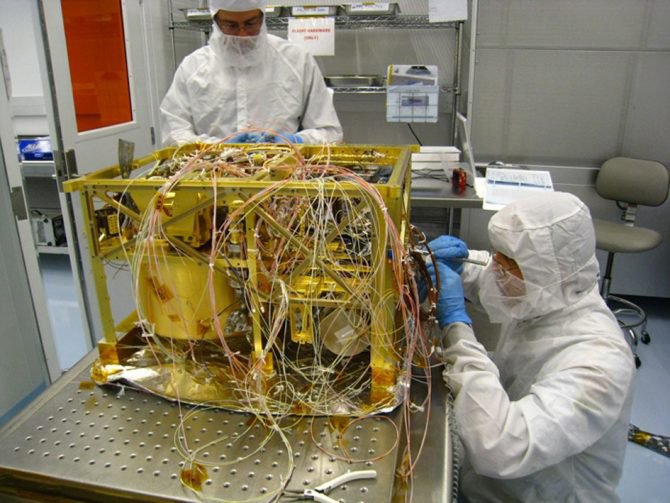
Researchers have identified a prospective biosignature for iron-oxidizing bacteria that could have implications in studying both life on the ancient Earth and potential life on Mars. The team used on-line thermochemolysis and gas chromatography–mass spectrometry (GCMS) to identify a strong and replicable signal linked to microbial iron-oxidation. The signal was present in samples known to contain iron-oxidizing bacteria (including freshwater and marine isolates, freshwater and marine environmental samples, modern iron oxide samples, and iron gossan samples), as well as in cultures of organisms grown in the laboratory.
The search for life beyond Earth is one of the most intriguing and important goals of NASA. In this search, scientists must identify biosignatures that provide a clear identification of biology. As such, the study of potential biosignatures is a major area of research for the Astrobiology Program at NASA.

The gold-plated Sample Analysis on Mars contains three instruments that make the measurements of organics and methane.Image credit: NASA/Goddard Space Flight Center.
These signatures of life inform the development of technologies that will be used on future space missions. Many can also be used to study life in Earth’s geological record, providing insight into life’s evolution on our own planet.
The study, “Metabolic Processes Preserved as Biosignatures in Iron-Oxidizing Microorganisms: Implications for Biosignature Detection on Mars,” was published in the journal Astrobiology. The work was was supported in part by NASA Astrobiology through the Sample Analysis at Mars (SAM) project and the Exobiology Program.
SAM is an instrument suite on the Mars Science Laboratory’s (MSL) Curiosity rover, and contains a Mass Spectrometer and Tunable Laser Spectrometer. SAM is fed samples by Curiosity’s robotic arm and is capable of measuring organic molecules at a level of a few parts per billion. The development of SAM received funding from Astrobiology Science and Technology Instrument Development (ASTID). From 1998-2013, ASTID supported astrobiology related instrumentation development. The instrument development programs have since been restructured to the current PICASSO and MatISSE programs.
